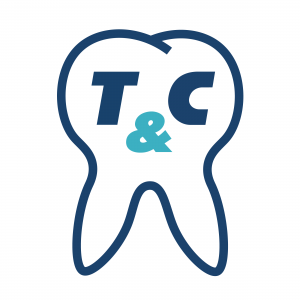Diabetes is the seventh most common cause of death in the United States, accounting for more than 87,000 deaths in 2019¹. Unfortunately, diabetes isn’t quite understood by the general population, and many individuals fail to recognize the gravity of the disease on their health. In today’s post, we will explore what causes diabetes, the side effects, and it’s implications on our oral health.
What Is Diabetes?
Diabetes mellitus literally translates to ‘sweet tasting urine.’ There’s plenty of stories about how diabetes got its name, but this literal meaning is derived from the the excess glucose that is found in the urine of those who are diabetic. The pathophysiology of diabetes explains this – but first, let’s discuss the different types of diabetes.
Diabetes is a group of metabolic diseases characterized by high blood glucose levels as well as the inability to produce or use insulin. There are multiple types of diabetes, but we will focus on the two most common – type I and type II diabetes. Type I diabetes is the result of the destruction of cells that produce insulin, called pancreatic beta cells. This results in less insulin. This is the type that many associate with having at birth. This is contrary to type II diabetes, which is characterized by insulin resistance (meaning insulin does not work properly in the body). Type II diabetes is the most prevalent form of diabetes, accounting for 90 to 95% of the patients with diabetes in the United States².

How Do We Get Diabetes?
Diabetes is caused by various factors. Type I is thought to be caused by the result of genetic, autoimmune, and environmental factors, with about 10% of the cases to be of unknown etiology. This is not the case for type II diabetes – obesity and lack of physical activity are the primary environmental factors that cause diabetes (although there are other factors, such as familial history). In fact, 60% of patients with type 2 diabetes are obese when they are diagnosed with diabetes².
Like we mentioned earlier, diabetes is an overarching label for high blood glucose levels or the inability to produce or use insulin. Insulin is produced by beta cells, and it’s a chemical that allows the body to uptake glucose and metabolize it properly. Glucose causes insulin secretion from the beta cells. If the beta cells do not operate properly, insulin will not be secreted. This is different from type II diabetes – insulin is still released, but does not act on glucose properly. This results in an accumulation of glucose in the the blood as well as the surrounding tissues.
‘This combination of underutilization and overproduction of glucose attained through glycogenolysis and fat metabolism results in glucose accumulation in the tissue fluids and in blood.’
Dental Management of the Medically Compromised Patient, 8th Edition
With an accumulation of glucose comes a plethora of side effects, leading to glucose excretion in the urine, increased urinary volume, and cellular starvation (as proper glucose utilization is not achieved). The primary manifestations of diabetes consist of three findings: hyperglycemia, ketoacidosis, and vascular wall disease². These three, together, contribute to an inability to fight infection properly which is a key component of modifying our treatment as dental practitioners.
So How Do I Know If I Have Diabetes?
Polydipsia (abnormal thirst), polyuria (abnormal urinary function), and polyphagia (abnormal hunger) are all signs that you may have diabetes. Other symptoms include bed wetting, irritability, and drowsiness. Although these symptoms seem harmless, there are underlying side effects that diabetes is responsible for that places it in the top 10 of deadliest diseases in America.

Try not to get overwhelmed, but diabetes has critical effects on metabolism, the cardiovascular system, eyes, kidneys, and the extremities – as well as being responsible for early death.
- On metabolism: Because the body isn’t utilizing glucose, many patients continue to eat more but also lose wait. If chronic, this results in metabolic acidosis – which over time can lead to coma and death.
- On cardiovascular: Diabetes is attributed to an increase in atheroscleosis of the vascular system, increasing the chance for cardiac disease and stroke³
- On eyes: Diabetes can cause blindness due to a condition known as retinopathy, and also places you at a greater risk for cataracts and glaucoma. Diabetes is the leading cause of blindness for anyone below the age of 75⁴
- On kidneys: Renal failure is responsible for the most deaths of those with type I diabetes, and diabetics are 25 more times likely to suffer from end-stage renal disease²
- On extremities: Diabetes results in foot infection that is responsible for over 90% of non-traumatic lower limb amputations, and over a million occur each year⁵.
Alright, It’s A Bad Disease – Aren’t We On A Dental Blog?
Diabetes has a profound effect on oral health. Because diabetes causes an excess of urine, the amount of fluids in the body are diminished. This results in xerostomia, or dry mouth. Dry mouth is also directly related to the medications that those with diabetes take such as metformin or glipizide. We know that xerostomia is a primary factor in the development of cavities⁶. Those with diabetes were found to have more glucose in their saliva, which could be a contributor to caries development, as well⁷.
Along with cavities, those with diabetes are more likely to experience tooth loss (you’ll see this in smokers, too). In fact, those with diabetes were found to have lost two times more of their teeth than those without diabetes⁷. This goes hand in hand with periodontal disease which is elevated in patients with diabetes⁸. Patients with diabetes are at an increased risk of periodontal disease and the progression and severity of it is observed to be greater.
It’s also not uncommon to observe more oral lesions in the those who suffer from diabetes, including candidiasis, traumatic ulcers, and lichen planus². Candidiasis, also termed thrush, is a white fungal plaque that can be wiped off and is found on the buccal mucosa, tongue, and palate. It wipes off easily, and is sometimes observed with a burning sensation. This pathology can present due to antibiotics that kill off competing bacteria, or immunosuppression⁹.

Often, diabetes is associated with poor wound healing – this is particularly relevant for dentist who plan to perform extractions or other surgeries on those with diabetes. There are studies that show delayed wound healing is not a factor for those with diabetes who have had tooth extractions⁷. For instance, in 2019, a study showed that – ‘Diabetics… if well controlled, tend to heal up well following dental extractions but with a small but not statistically different rate of postextraction complications including infection. This is contrary to what is usually taught.¹⁰’ This isn’t to say diabetes shouldn’t be a consideration when discussing surgery, though, as those who are uncontrolled will find that – ‘Diabetes mellitus is associated with poor bone healing, increased risk of bone fracture, osteoporosis and diminished bone regeneration.¹¹’ Once again, this previous citation goes on to say that those with controlled diabetes may not be at risk for post-op complications regarding extractions.
Finally, those with diabetes may find they have burning-mouth syndrome, though this is still found to be a debate. One study in 2007 with a small sample size found that the syndrome was slightly more common in those with type 1 diabetes within their test group¹². Those patients who are found to have burning-mouth syndrome also experience xerostomia and candidiasis, which overlap with the presentation of diabetes and complicate the association between burning-mouth syndrome and diabetes¹³. With this in mind, the debate between burning-mouth syndrome and diabetes is still to be concluded.
As a dental practitioner, it’s essential to assess whether or not your patient has a controlled level of diabetes or not. In future posts, we will explore how to manage a diabetic patient and the things you should look for when treating them.
To Summarize:
- Diabetes is a complicated disorder characterized by high blood glucose
- There are various causes of the disease, but obesity and lack of exercise contributes greatly to type II diabetes
- Some symptoms of diabetes include using the bathroom frequently, as well as abnormal hunger or thirst
- Diabetes presents with numerous complications such as heart disease, kidney failure, and even blindness
- Diabetes is the seventh-ranked cause of death in the US
- Diabetes can cause dry mouth, which results in an increased susceptibility to cavities
- Periodontal disease is more common in those with diabetes, and you’re at a higher risk for tooth loss overall
- Diabetes can also cause oral lesions, such as candidiasis
- Assessing your patient’s diabetes and if it is controlled is essential before beginning dental treatment
References:
¹CDC. (2021, January 25). FastStats – diabetes. Retrieved February 23, 2021, from https://www.cdc.gov/nchs/fastats/diabetes.htm
²Little, James W., Donald Falace, Craig Miller, Nelson Rhodus. Little and Falace’s Dental Management of the Medically Compromised Patient, 8th Edition. Mosby, 032012. VitalBook file.
³Chen, R., Ovbiagele, B., & Feng, W. (2016). Diabetes and Stroke: Epidemiology, Pathophysiology, Pharmaceuticals and Outcomes. The American journal of the medical sciences, 351(4), 380–386. https://doi.org/10.1016/j.amjms.2016.01.011
⁴Swanson M. (2005). Retinopathy screening in individuals with type 2 diabetes: who, how, how often, and at what cost–an epidemiologic review. Optometry (St. Louis, Mo.), 76(11), 636–646. https://doi.org/10.1016/j.optm.2005.08.019
⁵Rodrigues, B. T., Vangaveti, V. N., & Malabu, U. H. (2016). Prevalence and Risk Factors for Diabetic Lower Limb Amputation: A Clinic-Based Case Control Study. Journal of diabetes research, 2016, 5941957. https://doi.org/10.1155/2016/5941957
⁶Manlapaz, H. J. (2017). Implications of xerostomia and caries in community–dwelling older adults. Canadian Journal of Dental Hygiene, 51(3), 126–131
⁷Borgnakke, W. S. (2019). IDF Diabetes Atlas: Diabetes and oral health – A two-way relationship of clinical importance. Diabetes Research and Clinical Practice, 157. https://doi.org/10.1016/j.diabres.2019.107839
⁸Kocher, T., König, J., Borgnakke, W. S., Pink, C., & Meisel, P. (2018). Periodontal complications of hyperglycemia/diabetes mellitus: Epidemiologic complexity and clinical challenge. Periodontology 2000, 78(1), 59–97. https://doi.org/10.1111/prd.12235
⁹Chi, Angela, Brad Neville, Douglas Damm, Carl Allen. Oral and Maxillofacial Pathology, 4th Edition. Saunders, 052015. VitalBook file.
¹⁰Power, D. J., Sambrook, P. J., & Goss, A. N. (2019). The healing of dental extraction sockets in insulin-dependent diabetic patients: a prospective controlled observational study. Australian dental journal, 64(1), 111–116. https://doi.org/10.1111/adj.12669
¹¹Nazir, M. A., AlGhamdi, L., AlKadi, M., AlBeajan, N., AlRashoudi, L., & AlHussan, M. (2018). The burden of Diabetes, Its Oral Complications and Their Prevention and Management. Open access Macedonian journal of medical sciences, 6(8), 1545–1553. https://doi.org/10.3889/oamjms.2018.294
¹²Moore, P. A., Guggenheimer, J., & Orchard, T. (2007). Burning mouth syndrome and peripheral neuropathy in patients with type 1 diabetes mellitus. Journal of diabetes and its complications, 21(6), 397–402. https://doi.org/10.1016/j.jdiacomp.2006.08.001
¹³Verhulst, M., Loos, B. G., Gerdes, V., & Teeuw, W. J. (2019). Evaluating All Potential Oral Complications of Diabetes Mellitus. Frontiers in endocrinology, 10, 56. https://doi.org/10.3389/fendo.2019.00056
Liability Statement:
The medical advice given in this blog should only be utilized by a medical professional who has received a medical degree. I am not responsible for the medical advice given in this blog and each case should be reviewed extensively with sources outside my blog. This blog is for education purposes only and is not meant as a substitute for an academic institution.

